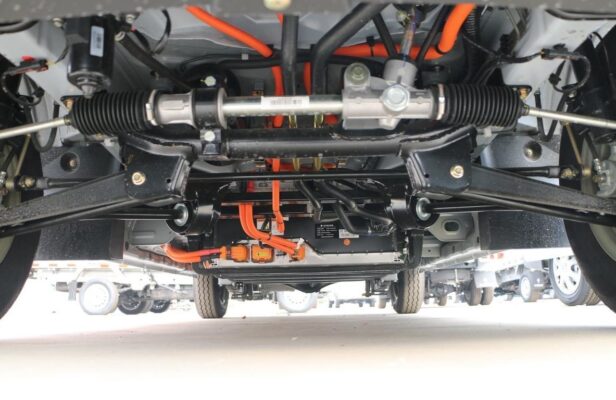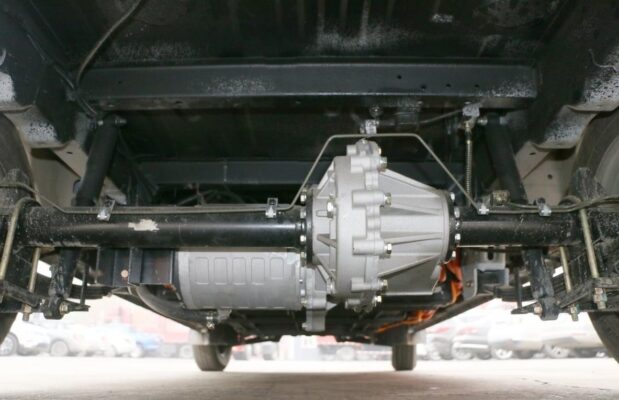Air conditioning, an indispensable configuration in a vehicle, effectively addresses the discomfort arising from environmental conditions during winter and summer. Its presence undoubtedly offers better control over the vehicle’s interior environment. Both electric vehicles and traditional fuel vehicles are equipped with this feature. When it comes to automotive air conditioning, traditional fuel vehicles typically rely on the internal combustion engine to drive the air conditioning compressor, thereby achieving heating and cooling within the vehicle to maintain the most comfortable temperature for occupants. However, with the increasing popularity of electric vehicles, the structure of these vehicles differs from that of fuel vehicles, which subsequently leads to variations in the vehicle’s air conditioning and other related systems. So, how exactly do pure electric vehicles manage heating and cooling?

To understand how pure electric vehicles heat and cool, it is necessary to commence from the working principle and structure of their air conditioning systems. The air conditioning system of pure electric vehicles, due to the absence of an engine as the power source for the air conditioning compressor in their design, cannot directly adopt the solutions employed by traditional automotive air conditioning systems. When it comes to vehicle heating for electric vehicles, it can be accomplished through the vehicle’s own high-voltage direct current power supply and electric heat pump. Specifically, the high-voltage battery supplies power to the vehicle’s heat pump, and warm air is generated through the internal conversion processes of the heat pump, thereby achieving vehicle heating.

In terms of cooling, it shares certain similarities with fuel vehicles. The cooling system of the air conditioning in electric vehicles is fundamentally similar to that of traditional vehicles, mainly consisting of five key components: an integrated compressor, condenser, expansion valve, evaporator, and liquid storage dryer. Additionally, an air conditioning driver for the electrical system is incorporated. The air conditioning compressor of an electric vehicle is driven by high-voltage electricity, and the compressor controller is installed on the compressor and is governed by the vehicle control unit (VCU). When cooling is required, the vehicle control unit can activate the air conditioning compressor to generate the cooling effect and fulfill this function.
The heat pump system used for heating in pure electric vehicles operates on a different principle compared to conventional heating methods. It leverages the thermodynamic cycle to extract heat from the external environment and transfer it into the vehicle cabin. This process is highly efficient and helps conserve energy, thereby reducing the impact on the vehicle’s battery range. Advanced heat pump systems can even scavenge heat from low-temperature sources, enhancing their performance in cold weather conditions.

For the cooling aspect, while the basic components and mechanisms might be similar to traditional vehicles, the higher voltage requirements and electrical control systems in electric vehicles demand more precise and intelligent management. The vehicle control unit continuously monitors various parameters such as cabin temperature, ambient temperature, and passenger settings to optimize the cooling output and energy consumption of the air conditioning system.
It’s important to note that the energy consumption associated with heating and cooling in electric vehicles has a direct impact on their cruising range. Unreasonable or excessive use of the air conditioning system can lead to a significant reduction in the vehicle’s range, which is a critical consideration for electric vehicle owners. Therefore, when operating the vehicle’s air conditioning, it is essential to use it judiciously and make use of energy-saving features or settings where available.
Some electric vehicles come equipped with preconditioning functions that allow the vehicle to heat or cool the cabin while still connected to a power source before the journey begins. This helps minimize the energy draw from the battery during actual driving and optimizes the overall energy efficiency.

In addition, advancements in insulation materials and thermal management technologies are also being pursued to enhance the energy efficiency of the vehicle cabin. Better insulation can reduce heat loss or gain, reducing the burden on the air conditioning system and conserving battery power.
In conclusion, as electric vehicles continue to gain prominence as an important mode of transportation, the aspects of air conditioning heating and cooling not only play a crucial role in passenger comfort but also have significant implications for the vehicle’s performance and range. Consumers, when choosing an electric vehicle, increasingly take into account the efficiency and effectiveness of the air conditioning system. Automakers, on the other hand, are constantly innovating and optimizing these systems to provide a more balanced and sustainable driving experience. By using the vehicle’s air conditioning systems rationally and leveraging technological advancements, electric vehicle owners can enjoy a comfortable ride while minimizing the impact on range and maximizing the overall efficiency of their vehicles.